Erythritol is the absolute best natural sweetener you can buy. Powdered erythritol is a simple and easy way to sweeten almost anything!
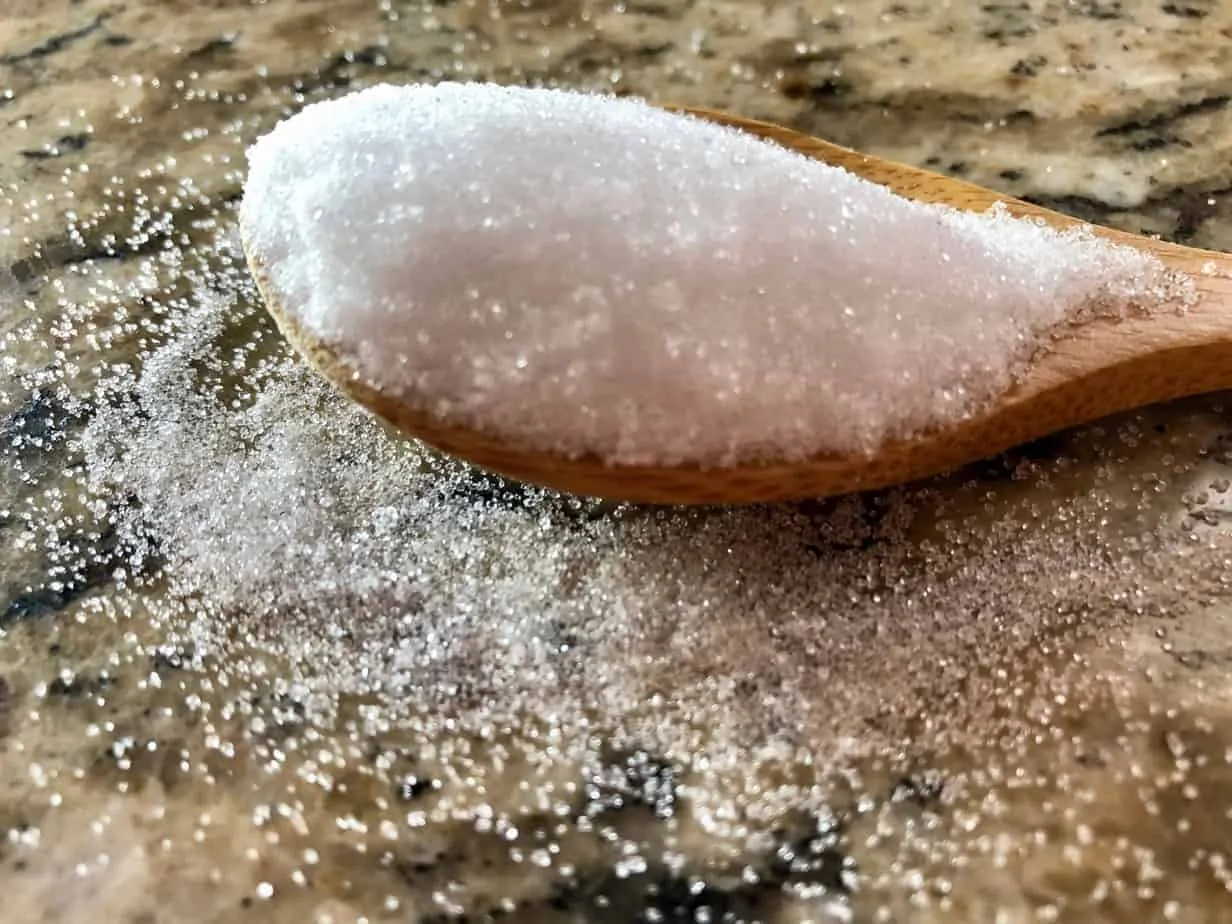
WHAT IS ERYTHRITOL?
At the most simple level, erythritol is a granulated sugar alcohol. It is made by (oddly enough) fermenting glucose with yeast. Erythritol can also occur naturally in a small number of fruits and other fermented foods.
Erythritol is sweet to the taste as it is eaten, then filtered out by our bodies and excreted in our urine.
DOES ERYTHRITOL TASTE LIKE SUGAR?
Sorta. Erythritol is only 70% as sweet as sugar and has a small fraction of the calories.
It does have a sugar-like appearance since it’s granulated, but it does not taste like sugar in the traditional sense. Its cooling effect also helps to differentiate its taste from that of sugar.
For more information about erythritols cooling effect, read on below.
THE COOLING EFFECT OF ERYTHRITOL
One of the few negative aspects of this wonderful sweetener is its cooling effect.
This basically means that when eating something that has been sweetened with erythritol, you will more than likely experience a cool taste in your mouth.
This is often compared to the cooling effect of mint.
While not a huge deal, erythritol does have the most noticeable cooling effect of any of all sugar alcohols. Fortunately, powdering the granules seems to help alleviate some of this cooling.
DOES ERYTHRITOL IMPACT BLOOD SUGAR?
Due to its chemical makeup, erythritol has a glycemic index of 0. This means that it has zero impact on blood sugar levels when ingested.
For reference, pure sugar has a glycemic index of 100.
Don’t be fooled, however. Just because erythritol is a sugar alcohol, that doesn’t mean that all sugar alcohols are created equal.
In fact, most sugar alcohols register on the glycemic index.
Here are some of the most common sugar alcohols used in products and/or ketogenic and low-carb cooking and their glycemic index scores.
- Erythritol = 0
- Sorbitol = 4
- Xylitol = 12
- Maltitol = 35
Just in case these numbers are somewhat confusing, keep this in mind. The higher the glycemic index of a sweetener, the more likely it is to spike your blood sugar levels.
If you are pursuing a carbohydrate-limited way of eating, such as ketogenic or low-carb, spikes in blood sugar levels are not what you are looking for.
Actually, spikes and raised blood sugar levels is the nasty secret behind the process of gaining weight.
Therefore, the goal is to minimize sugar spikes that as much as possible and any sweetener with a high glycemic index should certainly be avoided.
NOTE OF CAUTION WHEN USING ERYTHRITOL…
Like with any artificial sweetener, too much might not be such a good thing.
When erythritol is ingested, roughly 90% of it is absorbed into the bloodstream before it makes it to the large intestine. Because of this, erythritol generally does not cause gastrointestinal issues like other sweeteners.
However… Consuming erythritol in larger quantities can lead to digestive issues including bloating, gas, and diarrhea.
Because of this, make sure to monitor how much erythritol you ingest to avoid the digestive issues that could come along with its consumption.
HOW TO MAKE POWDERED ERYTHRITOL
Sure, you can buy powdered erythritol sweeteners in-store and online.
However, a good number of these are mixed with other artificial sweeteners and are more expensive simply because they are pre-powdered.
The good news is, making your own powdered erythritol is much easier than you might think.
So, instead of having to constantly buy products like Swerve Sweetener or having to keep both granulated and powdered erythritol on hand, you can simply buy the granules and powder your own.
To do this, you will only need two items; a coffee grinder and granulated erythritol. They are both easy to grab from Amazon if you are unable to find them locally.
Begin by measuring the needed amount of erythritol into a measuring cup or measuring spoon.
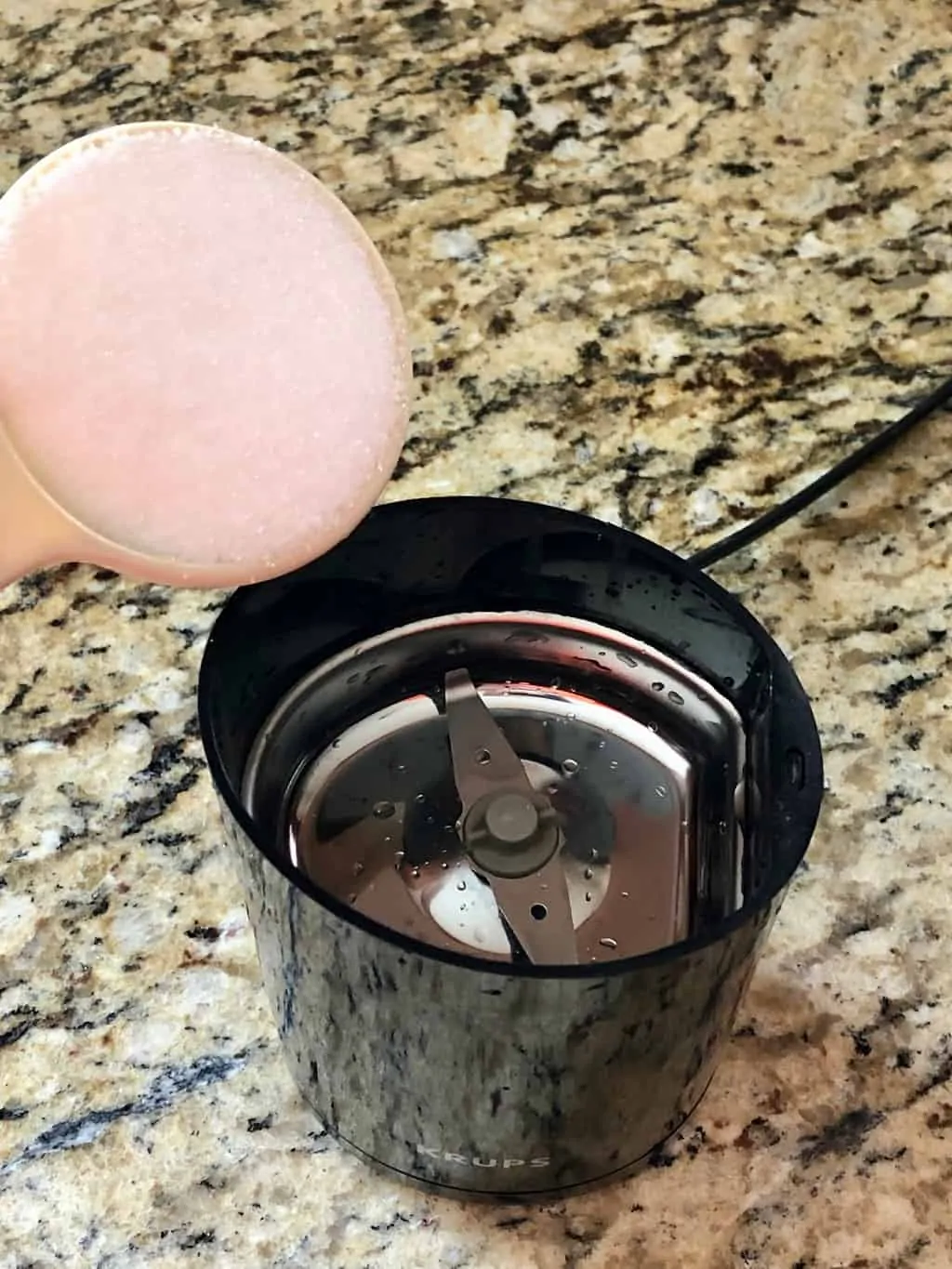
Next, pour the granulated erythritol into the coffee grinder.
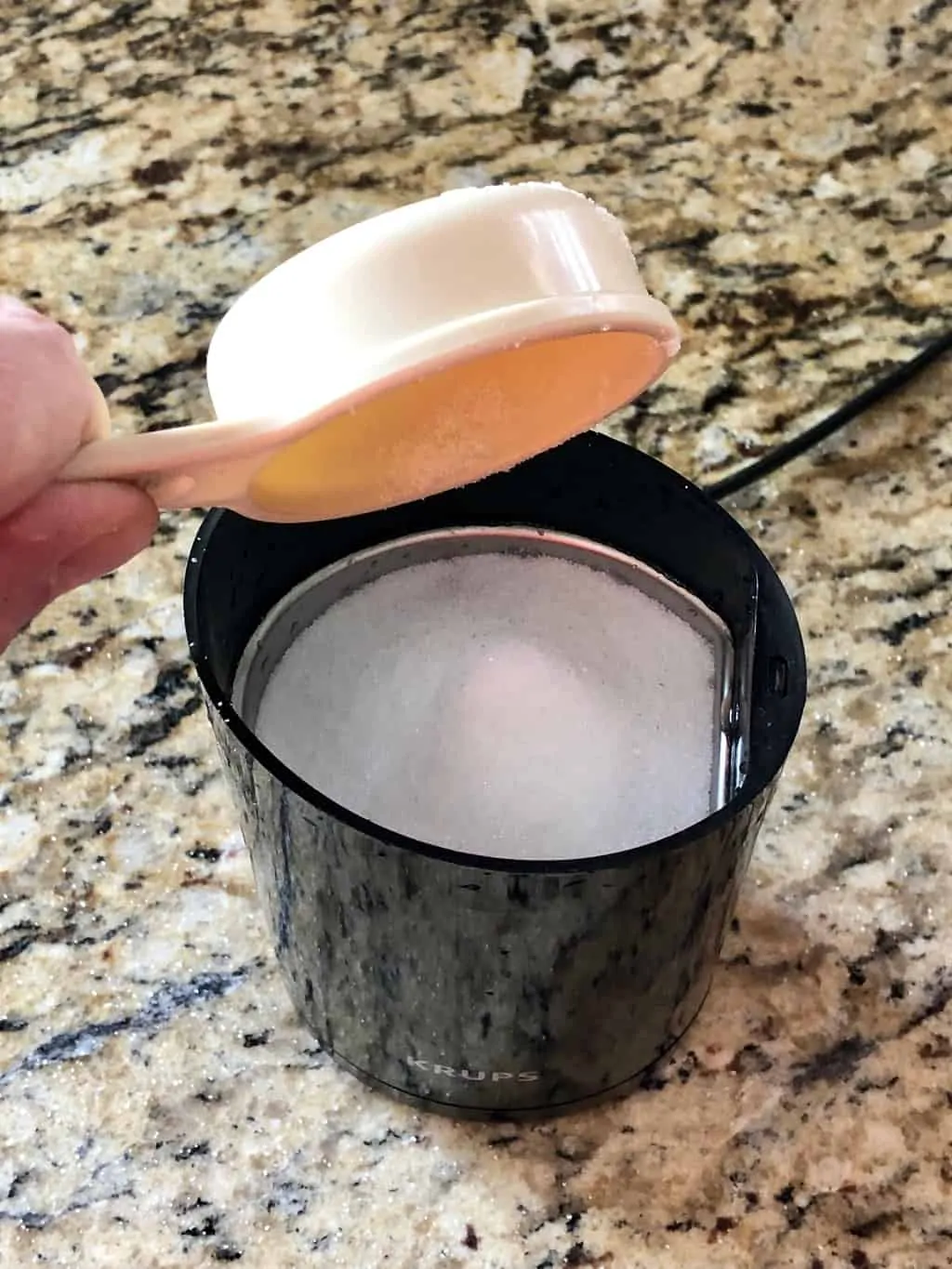
Pulse or run the grinder until the erythritol has turned from granules into powder.
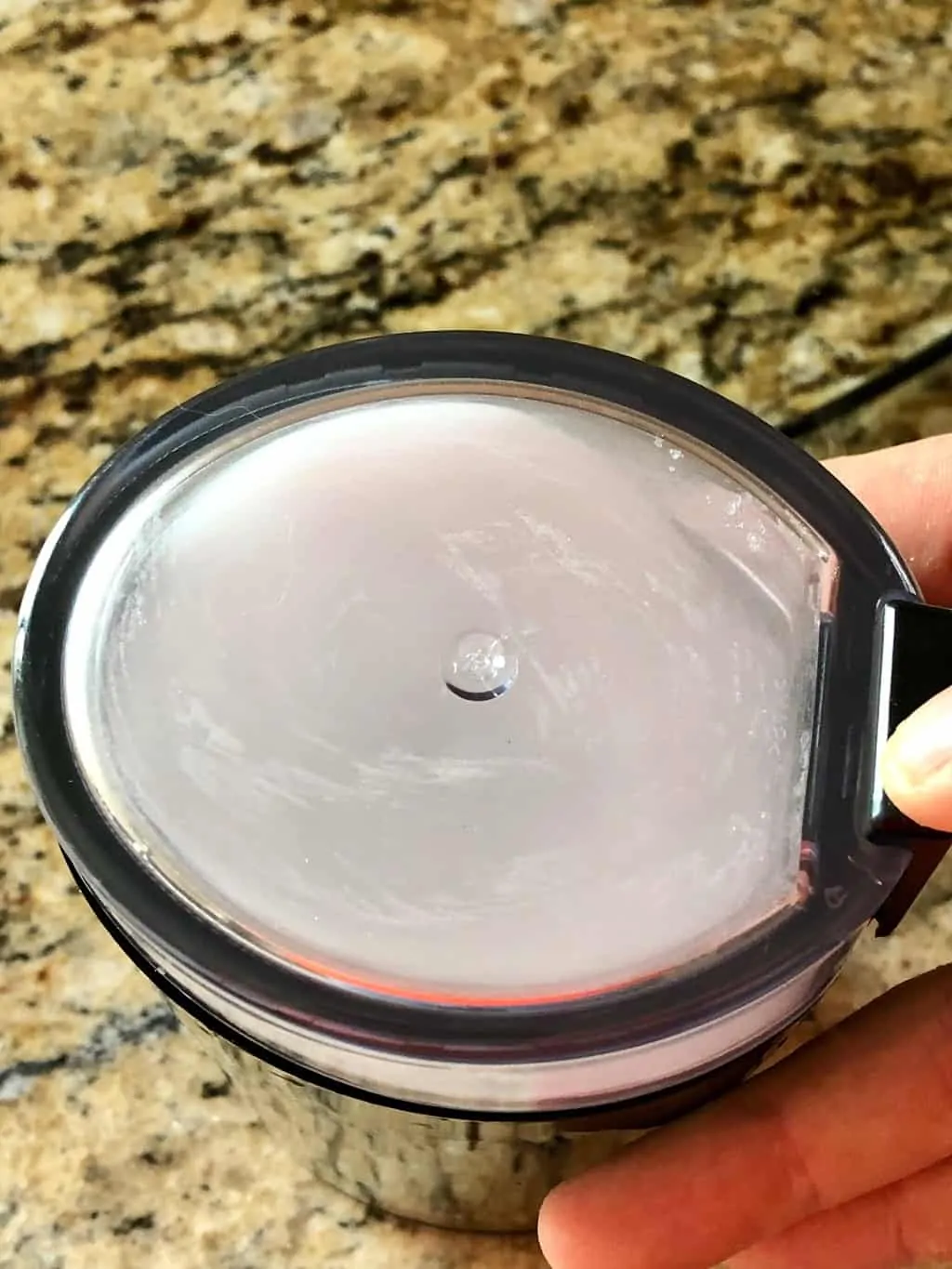
To get all of the powder into the bottom, gently tap the grinder against the countertop before opening.
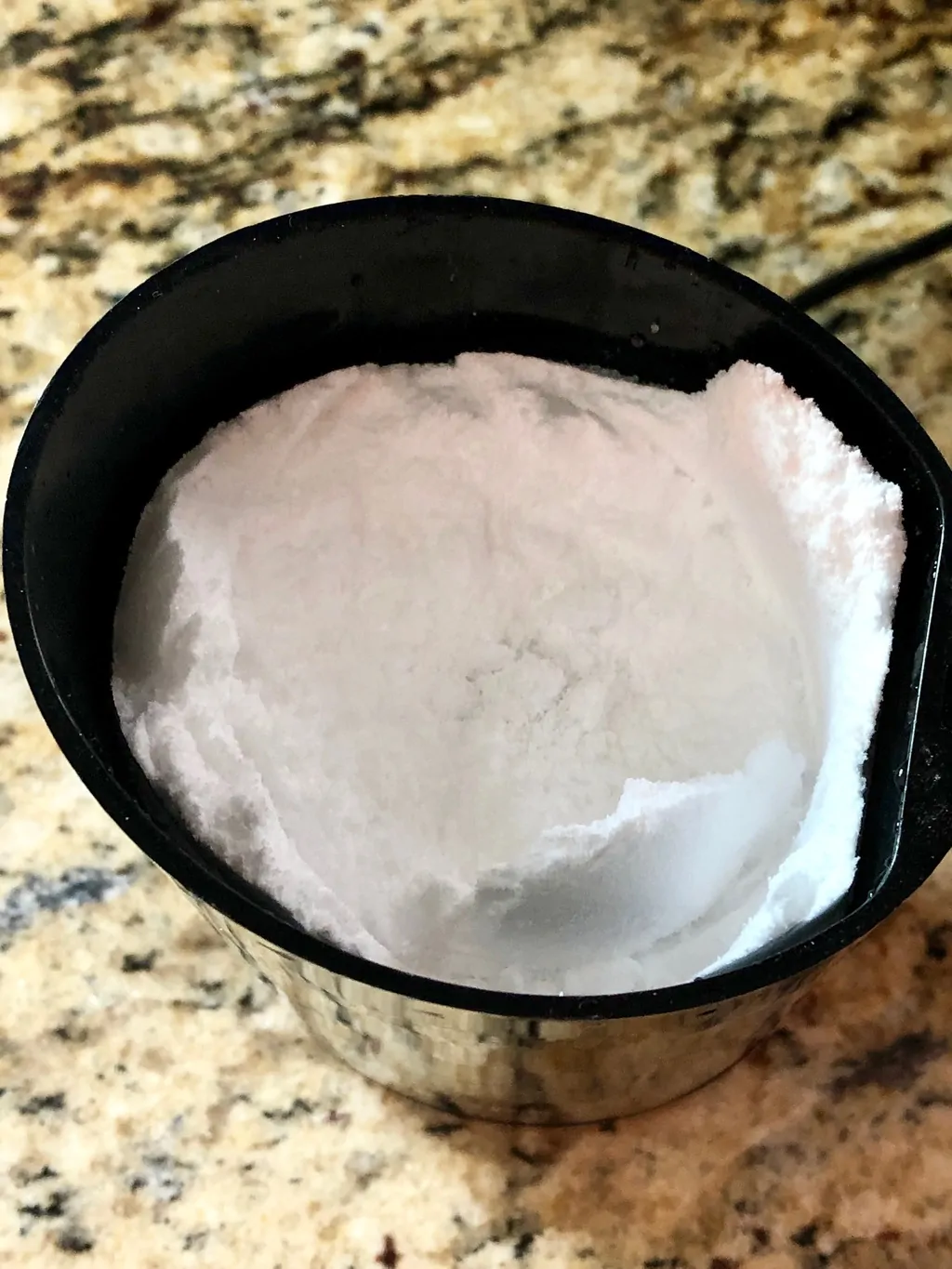
Pour the powdered erythritol directly from the grinder into whatever you are using it.
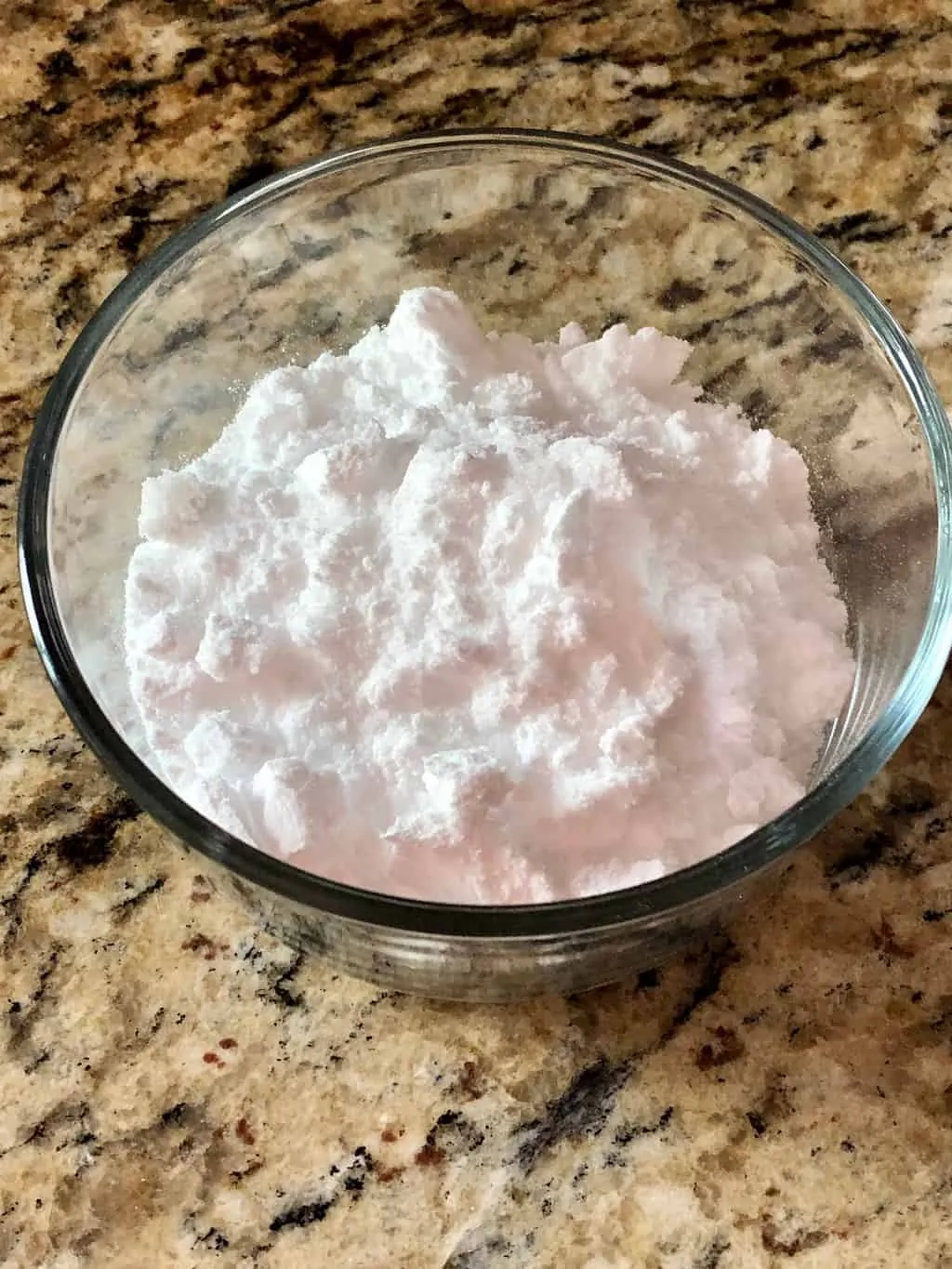
TOOLS USED TO MAKE POWDERED ERYTHRITOL
- Coffee Grinder – A coffee grinder can be used for many different applications in your kitchen. Even though it was intended to grind coffee it can grind and powder other ingredients as well. For this recipe, a grinder can make all the difference in the world!
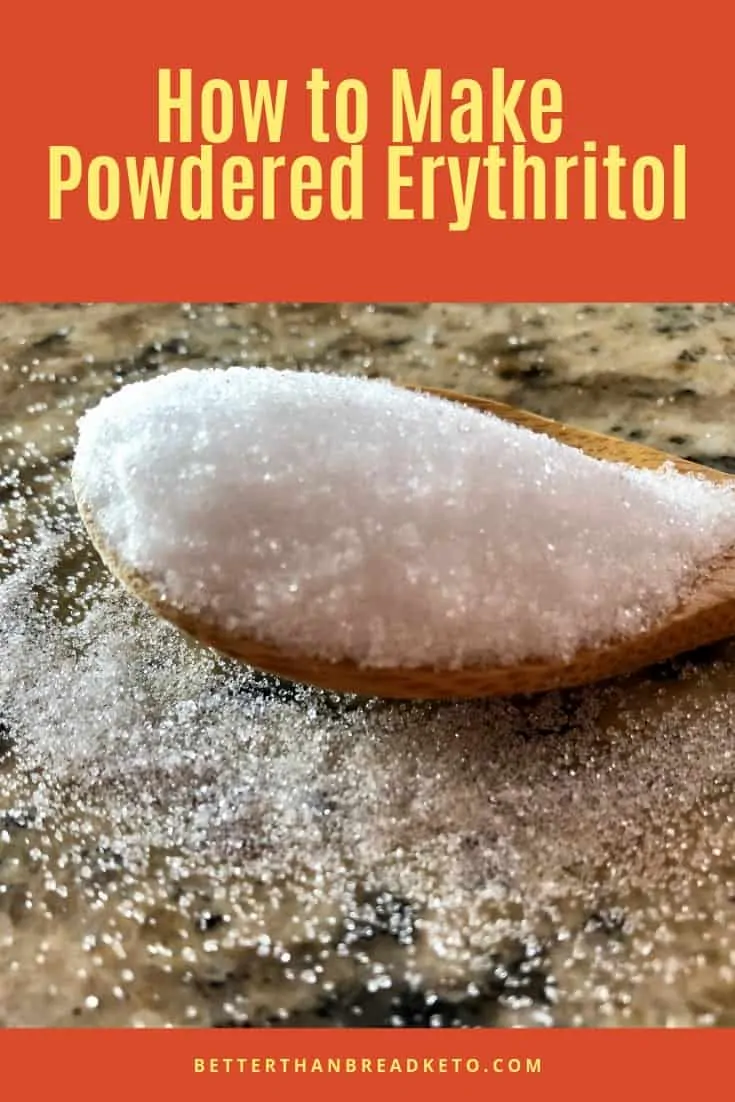
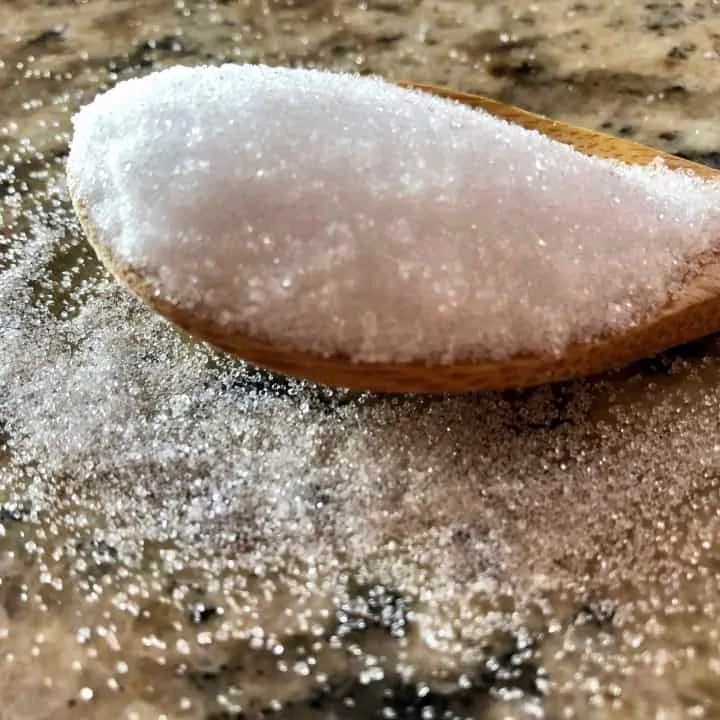
How To Powder Erythritol
Erythritol is the absolute best natural sweetener you can buy. Powdered erythritol is a a simple and easy way to sweeten almost anything!
Materials
Tools
Instructions
- Measure the needed amount of erythritol in a measuring cup or spoon
- Pour the granulated erythritol into the coffee grinder
- Pulse the coffee grinder until the erythritol has turned from granules into powder
- Gently tap the grinder against the countertop before opening
- Pour the powdered erythritol directly from the grinder into whatever you are using it
Notes
- Keep in mind that powdered erythritol and granulated erythritol will not measure the same, but powdered will result in a sweeter taste that actually mixes with other ingredients
Recommended Products
We are a participant in the Amazon Services LLC Associates Program, an affiliate advertising program designed to provide a means for us to earn fees by linking to Amazon.com and affiliated sites. As an Amazon Associate, we earn from qualifying purchases.
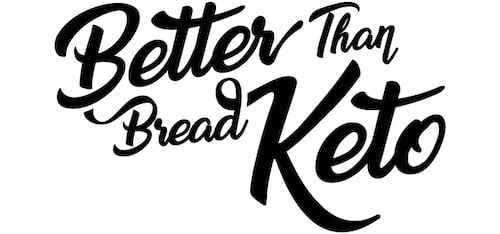
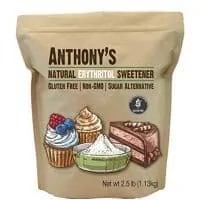

Louise Kwalton
Wednesday 2nd of December 2020
I read that confectioners sugar contains corn starch. If so, how much should i add?
Logan Childress
Wednesday 2nd of December 2020
Louise,
You wouldn't add any corn starch as it would add a lot of unnecessary of carbs to the erythritol.
Mike
Tuesday 17th of November 2020
Hi Logan, You shared in this write-up that you measure out the granulated erythritol and then use a coffee grinder to turn it to powder. It can then be used in your recipe as they don't measure the same. Is there a standard conversion measurement that could be implemented? (i.e., 1/2 cup granulated = 1 cup powdered)
Phyl
Monday 31st of May 2021
@Mike, actually 1 cup of granular yields 1.75 cups of powdered. I sweeten according to taste. Hope this helps!
Logan Childress
Friday 27th of November 2020
Mike,
I've never really measured it out the way you are asking, which I understand to be "X in means X out." I just make enough to follow the recipe, but I would assume you get about 75% of powdered product from the amount of granulated you put in.
Linda
Friday 29th of May 2020
I use Splenda almost all the time. How does it compare?
Logan Childress
Friday 29th of May 2020
Linda,
They are comparable, though Splenda is able to be used in equal parts to sugar in recipes. Erythritol is 70% less sweet than sugar. Splenda also contains extra ingredients that make it dissolve easily, especially in liquids, which erythritol does not have. Of course, it's always best to use less ingredients but if you use Splenda and it works for you, then you could keep using it.
Milo
Monday 25th of November 2019
Rather than using a coffee grinder, would a high-speed blender like a Vitamix work just as well? I realize to some that might seem like overkill, but my Vitamix already sits out on the counter 24/7 and I don't own a coffee grinder or want to get one more appliance. Any tips around my idea would be appreciated.
Logan Childress
Wednesday 27th of November 2019
Milo,
You could certainly do this. You will probably have to shake the canister a few times in the process to get it ground evenly, but I definitely think this would work.
Christine Phillips
Friday 21st of December 2018
Can you supply your recipes in metric for uk people?
Logan Childress
Friday 21st of December 2018
Christine,
We would be happy to but currently our recipe plug-in doesn't support conversions. As soon as it does all of our recipes well be metric-friendly.